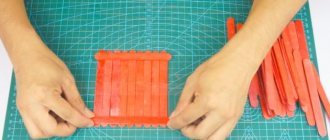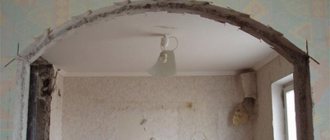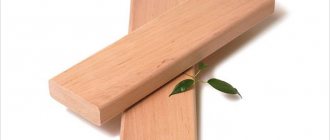Ceramic dishes, like any other, tend to deteriorate. To prevent this from happening, regular maintenance must be carried out. In today's publication, the HouseChief editors will look at how to sharpen a ceramic knife at home to restore it to its former sharpness. The listed methods will help you save money and avoid buying a new product for cutting food.
It has been repeatedly observed that those who try to sharpen a ceramic knife with mechanical metal sharpeners end up with a severe defect in the cutting edge
What is special and different between ceramic knife blades and metal ones?
By the appearance of a cutting kitchen tool, it can be determined that metal and ceramic specimens have significant differences. As for the second type of knives, they have an aesthetic design, are easy to use, and are less likely to become dull (of course, if they are a high-quality tool).
Perforated ceramic knives require special attention during sharpening, as there is a high risk of surface damage
However, the way to care for such knives is more serious. They must be stored in a specially designated stand or niche, use only special accessories for sharpening, do not cut hard objects, etc.
Speaking about knives with a metal cutting edge, it can be noted that they are no less sharp, but have an ultra-thin sharpened edge. These models will cost less, but will dull faster than their ceramic counterparts. There are many cases where the handles of steel tools break off, making their use inconvenient.
Quality of ceramic knives
In the 80s, Japanese technologists discovered the extraordinary qualities of a component such as zirconium dioxide. The mineral zircon is supposed to be its derivative.
The most important property of creations made from this component is the highest hardness. Compared to diamond, which has a hardness of 10 (on the Mohs scale), zirconium dioxide has a hardness of 8.5. And for hardened steel it is 6.2.
Another pleasant quality of this mineral is that it is chemically safe.
Ceramic knives got their name because of their production technology. They are made from zirconium dioxide powder by pressing in molds and subsequent heat treatment in an oven at a temperature of 1500°.
What is sharpening ceramic knives at home: possible methods
Poor quality knife in contact with an abrasive agent
Before you start renewing the cutting edge of a ceramic knife, you need to take care of special sharpening agents. After all, those that we are used to using for steel blades are not suitable for this processing. Let's consider possible options for sharpening ceramics with your own hands.
Rules for sharpening a ceramic knife at home - tips and videos
If you have a ceramic knife, you are in luck. Such knives do not require constant sharpening, like metal ones, for example. However, either over time or as a result of improper use, the question of sharpening the ceramic blade also arises. In order not to look for a specialized workshop for working with ceramics, familiarize yourself with the basic rules of such work, and you yourself will be able to sharpen dull ceramic blades.
In order to sharpen ceramic knives at home, special sharpeners are designed.
The fact is that any material can only be processed with a harder material.
Ceramics have increased hardness, so
diamond-coated sharpeners
Ceramic knives are divided into two types based on the type of sharpening - single-sided sharpening or double-sided sharpening. The most common is double-sided sharpening, since it can be used by both “right-handed” and “left-handed” people. According to their design, sharpeners are divided into mechanical and electrical.
Sharpeners are widely popular
Kyosera Corporation (Japan). They are universal, as they not only ensure alignment of the cutting part of the blade, but also correct chips and adjust the sharpening angle. Automation ensures the correct selection of the required distance between the sharpening planes depending on the thickness of the blade. And since for all knives this thickness is not the same along the entire length, such an adjustment ensures high-quality sharpening of the entire cutting part. In addition, the model provides a system for cleaning the workplace from the resulting crumbs and dust.
You can also sharpen on a sharpening machine, but only at low speeds and using a diamond wheel. You can also use the so-called musat. It should be noted that the requirements for a ceramic knife blade are not the same as for a metal one. Ideally, the cut on the edge of the cutting part should be convex. But metal blades cannot be sharpened this way. The reason is that ceramics is a fragile material. It should also be taken into account that the process of sharpening ceramics is quite long and requires care and a lot of patience. And know that the method of manual sharpening on a sharpener is different from sharpening on a grindstone. Having chosen a suitable device, familiarize yourself with the nuances of its use.
Keep in mind that a ceramic knife can only be sharpened a limited number of times. Therefore, do not use it when chopping bones. Heavily frozen foods should not be cut either. And never use a ceramic knife on a glass cutting surface.
Advantages of ceramic knives
The main advantages include:
- Sharp blade. For many housewives, it is important to cut easily and make the cut beautiful. That is why the choice falls on ceramic knives.
- Long service life without the need to sharpen the knife. Sharpening of such a knife occurs much less often than a steel one. It is not susceptible to rust.
- One of the constituent components is zirconium oxide. Thanks to it, neither the knife blade nor the food can oxidize.
- Well suited for teaching a child culinary arts. It is light and beautiful. It has rounded blade ends.
Sharpening knives with a diamond stone
This option will require special diligence and painstakingness. Despite this, it is widely used in practice. First you need to soak the block in cold water for about half an hour. We determine the trajectory necessary for the movement of the knife. For precise sharpening, it is better to copy the contours of the blade. You should be very strict about the sharpening angle. Its norm is 25-30°. During the entire sharpening, the angle cannot be changed. First, one side is painstakingly sharpened. Then the same thing is done at the same angle with the second side.
There is another sharpening method - a machine with a diamond wheel. Before sharpening, you should prepare 2 wheels of different grain sizes. The first one will be needed for sharpening, the second one for grinding. It is recommended to start sharpening with a hard wheel. The machine speed is reduced to a minimum. There is no need to rush to achieve quality sharpening. Particular attention is paid to the sharpening angle. In order to make the blade sharper, the knife should be sharpened at an angle of 10-15°. Only with this sharpening will the knife quickly lose its sharpness.
If everything is done correctly, the knife will cut perfectly and remain sharp for a long time. You can check the quality of sharpening by paying attention to the shape of the blade. If it is slightly convex, then everything is correct.
The easiest way to sharpen ceramic knives is to leave it in the hands of a specialist. In a word, you should take it to a workshop. The work will be done efficiently and quickly. The knife will be guaranteed. The cost of this service is inexpensive. It will only take half an hour. In addition, subsequent sharpening of the knife will not be needed soon.
Useful tips:
- Depending on the sharpening, ceramic knives are single-sided or double-sided. The double-sided sharpening method is suitable for both right-handers and left-handers. It is better to opt for a universal option.
- Sharpening a knife using a diamond wheel should be done diligently and carefully.
- To obtain an ideal and high-quality sharpening of a tool, its side surfaces should be slightly convex. With this form of sharpening the blade will have greater strength.
Sharpening knives with a sharpener
Sharpeners can be mechanical or electric. The advantages of the latter: low probability that the knife will be damaged; the person is safe and protected from accidental cuts; The sharpening angle is calculated automatically.
A sharpener will be a very useful tool for those who have ceramic knives in the house. Over time, it pays for itself, and a person acquires new useful skills. Moreover, this option will allow you to sharpen the knife with high quality, almost as if it was done by a specialist in a workshop.
Operating rules
In order to avoid frequent sharpening of a ceramic knife, it is recommended to adhere to some specific rules for using such an essential tool in the kitchen. These include:
- It is not recommended to use a knife when cutting hard foods. Even considering that he can easily handle it.
- The cutting board should be made of plastic, wood or silicone. Working on a stone or glass surface will dull the blade.
- Products should be cut evenly and smoothly.
- You cannot “chop” greens the way you would with a knife with a steel blade. The greens need to be chopped, otherwise the blade will fall off the handle.
- It is not recommended to scrape vegetables and fruits, as the cutting part may be damaged.
- Handle the tool carefully, do not hit it on hard surfaces, as the handle may break off.
- Ceramic knives are washed with warm water with detergent added to it. Never use dishwashers to wash ceramic knives.
- Such a tool should be stored in a certain place, separate from spoons and forks. In contact with metal, ceramics may crumble.
- Ceramic knives cannot withstand sudden temperature changes. It is advised to avoid this as the ceramic may crack.
- You must not let the knife fall to the floor - there is a chance that it will fly apart.
- No need to use a knife like a screwdriver. They are prohibited from opening bottles and cans. Use it only for its intended purpose.
Disadvantages of ceramic knives
In addition to many advantages, ceramic knives have some disadvantages:
- They have high fragility. If dropped on a hard floor, the knife may break. The service life may become short.
- You can sharpen a knife only with material that contains diamond coating.
- The maximum blade length is 18 cm. It is not always convenient for them to cut.
- If you don’t wash the knife after cutting colorful vegetables, it will become stained.
- It is very easy to cut yourself with a ceramic knife. Because looking at his appearance, all precautions are lost.
Types of ceramic knives
We decided to buy a ceramic knife, the main thing is to understand the subtypes of these products. Know what they are and what the differences are between them.
Initially, attention is paid to the manufacturer. Specialists from Japan are leaders in this matter. Chinese ceramic knives are soft and short-lived.
Another distinguishing feature between knives is the variety of source materials. Black ceramics are more durable and hard than light-colored appliances.
Sharpening knives using musat
This option can only do a weak sharpening of ceramics if the sharpness just needs to be updated. If the other day the knife was thoroughly sharpened, but today it cut a huge amount of salads and became dull, then musat is the best way. But if the knife was sharpened a long time ago and now cuts disgustingly, then musat will not help here.
Initially, the musat should be placed in a vertical position, resting it on something solid. Start sharpening on its surface with smooth movements. Do not press the blade with great force. The movements must be repeated until the blade is sharpened.











